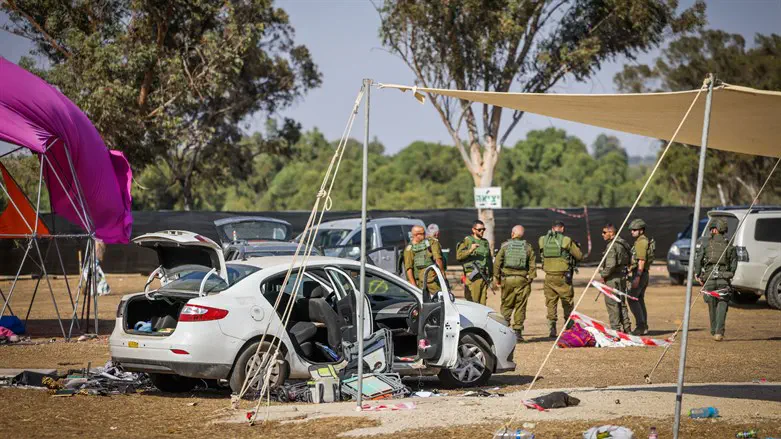
United Hatzalah volunteer Moshe Weitzman from Ashdod was one of the first to tend to the wounded on the morning of October 7th following the infiltration of over 1000 Hamas terrorists into the Gaza envelope communities.
Under fire, he tended to over 100 wounded victims, both soldiers and civilians, and was present at the sites of the massacres at the music festival near Re'im and later Kibbutz Be'eri.
Two days later, he was wounded by shrapnel from a missile that landed a few meters away from him in Sderot. In an interview with Radio Kol Berama, he recounted his difficult personal experience.
"It is still difficult to recall the difficult scenes I saw at Re'im," he said.
He recounted his personal shock. "The amount of dead and the torture they underwent is shocking. I don't know if I can tell what was there on air. At one point, I just stopped counting bodies because many more still needed help."
ZAKA volunteer Shmuel Dickstein also recounted in a conversation with Kikar Hashabbat the work to tend to and identify bodies while under fire in southern Israel.
"My parents don't live in Israel; they celebrateed the holiday here in Israel, and at the moment, my father and I are in the south to help tend to the bodies, my father is in charge of ZAKA in Ukraine, and during the war there he ran the body identification efforts.
I came to the area of the event near Re'im, where we worked to care for and identify the bodies until the morning. The work was really under fire, but our goal was to deal with as many bodies for the families that were uncertain about the fate of their loved ones," he explained.
"To enable us to bring bodies for burial as quickly as possible, we tried to do everything quickly, with the authorization of the military, of course. There were places, like Be'eri, where we weren't allowed to enter because of the terrorists who were still there, and we had to wait. Only on Monday did they allow us to enter Be'eri to tend to the many bodies that were there."
Dickstein recounted: "When we arrived at the big event in Re'im, we saw large amounts of bodies, that's where we began our work. There were very difficult sights. We also needed to identify which body belonged to a Jew and which belonged to a terrorist. And when we found the body of a terrorist, the military helped ensure that there were no bombs on their bodies."
He also described the horrors he saw in Be'eri. "In Be'eri, we found members of entire families bent over and tied up under the ruins of their house, and we can't even imagine what happened there. It's difficult to describe these sights, we dealt with very difficult cases and situations. Their goal was not only to murder but to cause indescribable suffering.

